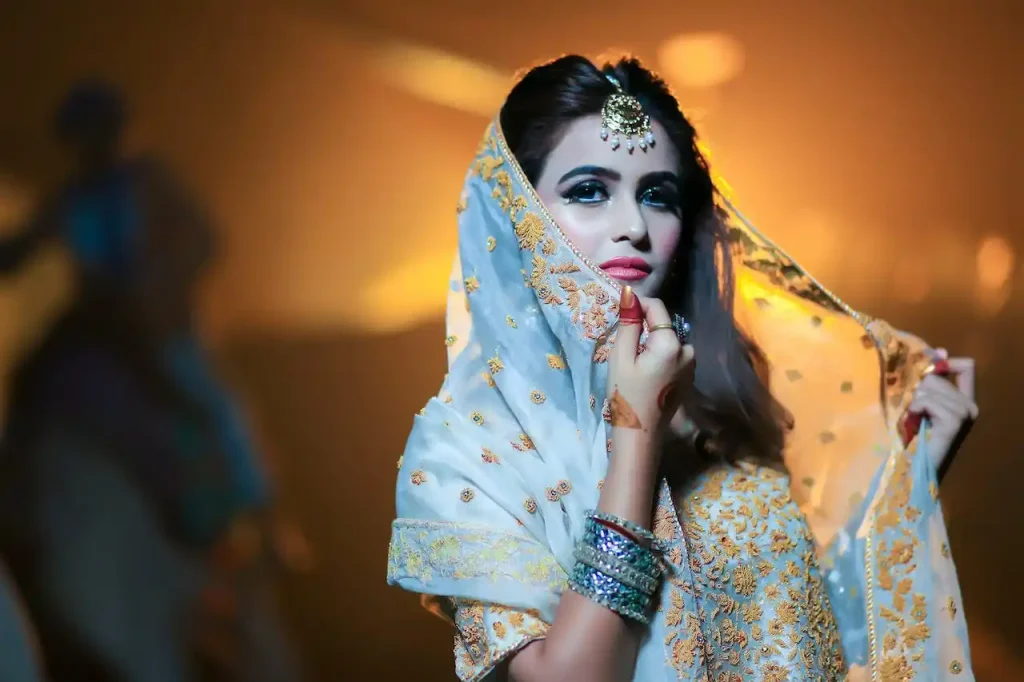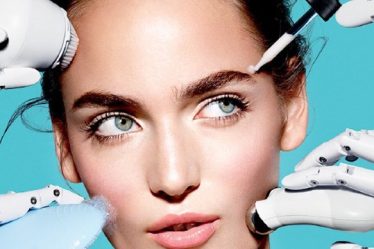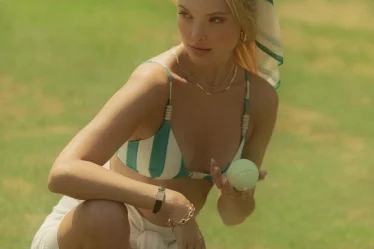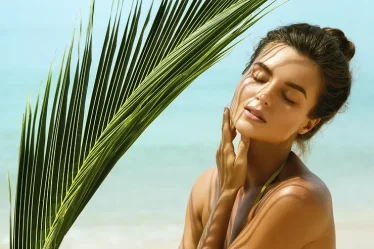Introduction
In a world where creativity knows no bounds, the realms of art and beauty converge in a mesmerizing dance of color, texture, and expression. The fusion of these two domains gives rise to a captivating synergy, where makeup becomes more than just a cosmetic enhancement—it becomes a canvas for artistic expression. Let’s embark on a journey to unravel the intricate relationship between art and makeup, delving into its historical roots, creative inspirations, societal impacts, and future prospects.
Historical Perspective
The art of adorning oneself with pigments and powders dates back to ancient civilizations, where makeup was imbued with ritualistic and symbolic significance. From the elaborate kohl-lined eyes of ancient Egyptians to the porcelain complexions of Elizabethan England, makeup has played a pivotal role in shaping cultural aesthetics throughout history. Over time, makeup evolved from a symbol of status and tradition to a medium of self-expression and creativity, laying the foundation for its artistic exploration in contemporary times.
Artistic Inspiration in Makeup
Art movements have long served as a wellspring of inspiration for makeup artists, influencing trends and techniques in the beauty industry. From the avant-garde surrealism of Salvador Dali to the bold pop art of Andy Warhol, visual art has permeated the world of makeup, giving rise to experimental looks and innovative styles. Collaborations between makeup artists and visual artists have blurred the lines between traditional art forms, resulting in mesmerizing creations that transcend conventional notions of beauty.
Expressive Potential of Makeup
At its core, makeup is a form of self-expression—an artistic medium through which individuals can convey their identity, emotions, and narratives. Whether it’s a daring red lip or a dramatic smoky eye, each brushstroke serves as a brushstroke serves as a reflection of one’s innermost desires and aspirations. Makeup artists wield their palettes like painters, using color, texture, and contour to sculpt and transform the human canvas, imbuing it with depth, dimension, and character.
Technical Mastery in Makeup Artistry
Behind the scenes of every flawless makeup look lies a mastery of technique and skill that rivals the precision of a master painter. Makeup artists undergo rigorous training and education to hone their craft, mastering the art of blending, shading, and highlighting to accentuate the natural beauty of their clients. From bridal makeup to editorial shoots, each application requires meticulous attention to detail and a keen understanding of facial anatomy, color theory, and product chemistry.
Cultural and Societal Impacts
The perception of beauty is as diverse as the cultures that define it, and makeup serves as a powerful tool for both conforming to and challenging societal norms. Across different societies and time periods, makeup has been used to signal social status, assert cultural identity, and defy conventional beauty standards. In an era of increasing globalization, the beauty industry is embracing diversity and inclusivity, celebrating the myriad shades of beauty that exist in the world.
The Art of Makeup Marketing
In the hyper-visual landscape of the beauty industry, aesthetics are everything. From sleek, minimalist packaging to elaborate, avant-garde advertising campaigns, makeup brands leverage the principles of visual art to captivate consumers and convey their brand identity. With the rise of social media influencers and digital marketing platforms, the art of makeup has transcended traditional boundaries, becoming a global phenomenon that inspires and empowers millions around the world.
Innovations at the Intersection
As technology continues to revolutionize every aspect of our lives, the makeup industry is at the forefront of innovation, incorporating cutting-edge technologies into product development and design. From 3D-printed makeup to virtual try-on apps, the boundaries between art and technology are blurring, opening up new possibilities for creativity and customization. As we enter the era of augmented reality and virtual reality, the future of makeup holds endless possibilities for artistic expression and self-discovery.
Celebrating Diversity and Inclusivity
Beauty knows no bounds, and neither should the makeup industry. In recent years, there has been a growing movement towards greater representation and inclusivity in the beauty industry, with brands expanding their shade ranges and casting a spotlight on diverse beauty ideals. Makeup artists are championing inclusivity through their work, creating looks that celebrate the beauty of all skin tones, genders, and identities. By embracing diversity, the art of makeup becomes a catalyst for social change and empowerment.
Challenges and Criticisms
Despite its transformative power, the makeup industry is not without its challenges and criticisms. From cultural appropriation to unrealistic beauty standards, makeup trends and advertising campaigns have come under scrutiny for perpetuating harmful stereotypes and ideals. As consumers become more socially conscious, there is a growing demand for transparency, authenticity, and ethical practices within the beauty industry, prompting brands to rethink their approach to marketing and product development.
Future Trends and Directions
As we look to the future, the intersection of art and makeup holds endless possibilities for innovation and creativity. From eco-friendly packaging to personalized skincare solutions, the beauty industry is undergoing a paradigm shift towards sustainability, customization, and inclusivity. As technology continues to evolve, we can expect to see new forms of artistic expression emerge, blurring the boundaries between reality and virtuality, and redefining the way we think about beauty.

Case Studies: Artistic Makeup Creations
From the whimsical fantasy of haute couture runway shows to the avant-garde experimentation of editorial photo shoots, makeup artists continue to push the boundaries of creativity and imagination. Iconic makeup looks inspired by art have graced the pages of fashion magazines and adorned the faces of celebrities, captivating audiences with their ingenuity and artistry. From the ethereal beauty of a watercolor-inspired eye to the bold abstraction of a geometric lip, these creations serve as testaments to the transformative power of makeup as an art form.
Impact on the Art World
As makeup gains recognition as a legitimate art form, it is finding its place within the hallowed halls of museums and galleries, alongside traditional forms of visual art. Exhibitions showcasing the work of makeup artists are drawing crowds and sparking conversations about the intersection of beauty and creativity. From retrospective retrospectives of legendary makeup artists to immersive multimedia installations, these exhibitions offer a glimpse into the multifaceted world of makeup artistry, challenging perceptions and expanding our understanding of what constitutes art.
Ethical Considerations
As consumers become more conscientious about the environmental and ethical implications of their purchasing decisions, the makeup industry is facing pressure to adopt sustainable practices and ethical sourcing standards. From cruelty-free formulations to recyclable packaging, brands are responding to consumer demands for transparency and accountability. By prioritizing ethics and sustainability, the beauty industry can ensure that the art of makeup remains a force for good in the world, enriching lives and inspiring creativity for generations to come.
Conclusion
In the intricate tapestry of human culture, art and beauty are inextricably intertwined, weaving together to form a rich and vibrant tableau of creativity and expression. The intersection of art and makeup offers a glimpse into the boundless potential of human imagination, where every brushstroke is a brushstroke is a stroke of genius and every face is a canvas waiting to be adorned. As we navigate the complexities of an ever-changing world, let us embrace the transformative power of makeup as an art form, celebrating its ability to inspire, empower, and uplift the human spirit.
FAQs:
- Is makeup considered an art form?
- Yes, makeup is widely recognized as a form of artistic expression, where individuals can creatively manipulate color, texture, and form to achieve desired aesthetic effects.
- What role does makeup play in society?
- Makeup serves various purposes in society, from enhancing beauty to expressing identity and cultural affiliation. It can also challenge societal norms and empower individuals to embrace their unique selves.
- How can I learn makeup artistry?
- There are many avenues for learning makeup artistry, including beauty schools, online tutorials, and workshops. Practice, experimentation, and continual learning are key to mastering the craft.
- Are there any ethical concerns associated with the makeup industry?
- Yes, some ethical concerns in the makeup industry include animal testing, unsustainable sourcing of ingredients, and unrealistic beauty standards perpetuated by advertising. Many brands are now addressing these issues through ethical practices and transparency.
- What trends can we expect to see in the future of makeup?
- The future of makeup is likely to be marked by innovations in sustainability, technology, and inclusivity. We can expect to see more eco-friendly products, personalized skincare solutions, and advancements in virtual makeup try-on technology.


